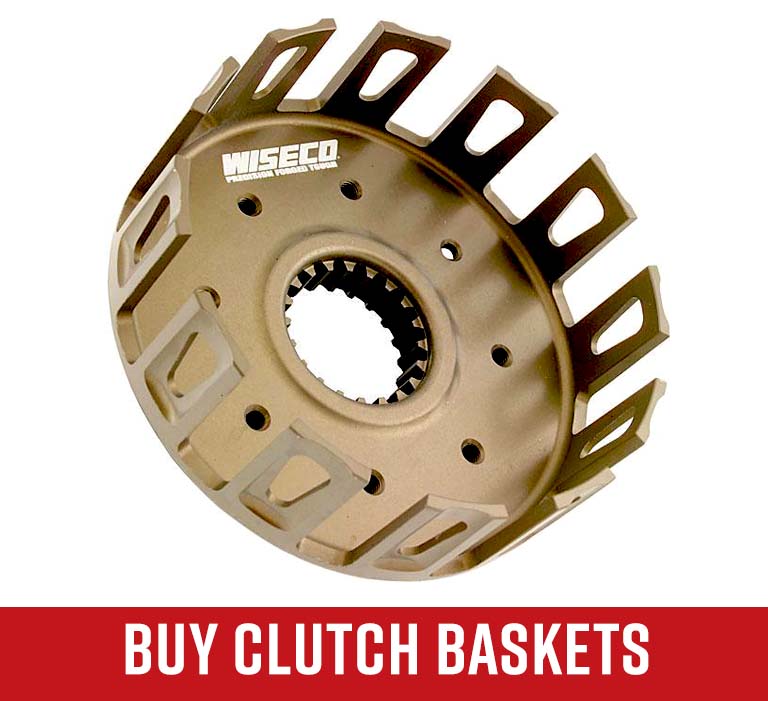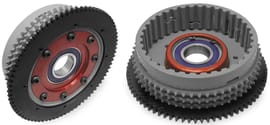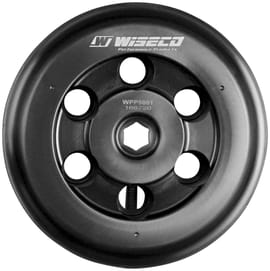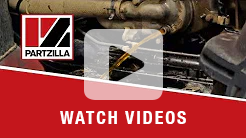How Motorcycle, ATV & UTV Clutches Work
There are three types of clutch systems used on motorcycles, ATVs and side-by-sides: multi-plate clutch, centrifugal clutch, and sheave clutch.
Multi-Plate Clutches
The multi-plate clutch is the standard type of clutch, as found on millions of cars, trucks, motorcycles and ATVs. A multi-plate clutch takes power from the engine and transfers it to the transmission input shaft, from where it's sent via the gearbox and chain to the rear wheel(s).
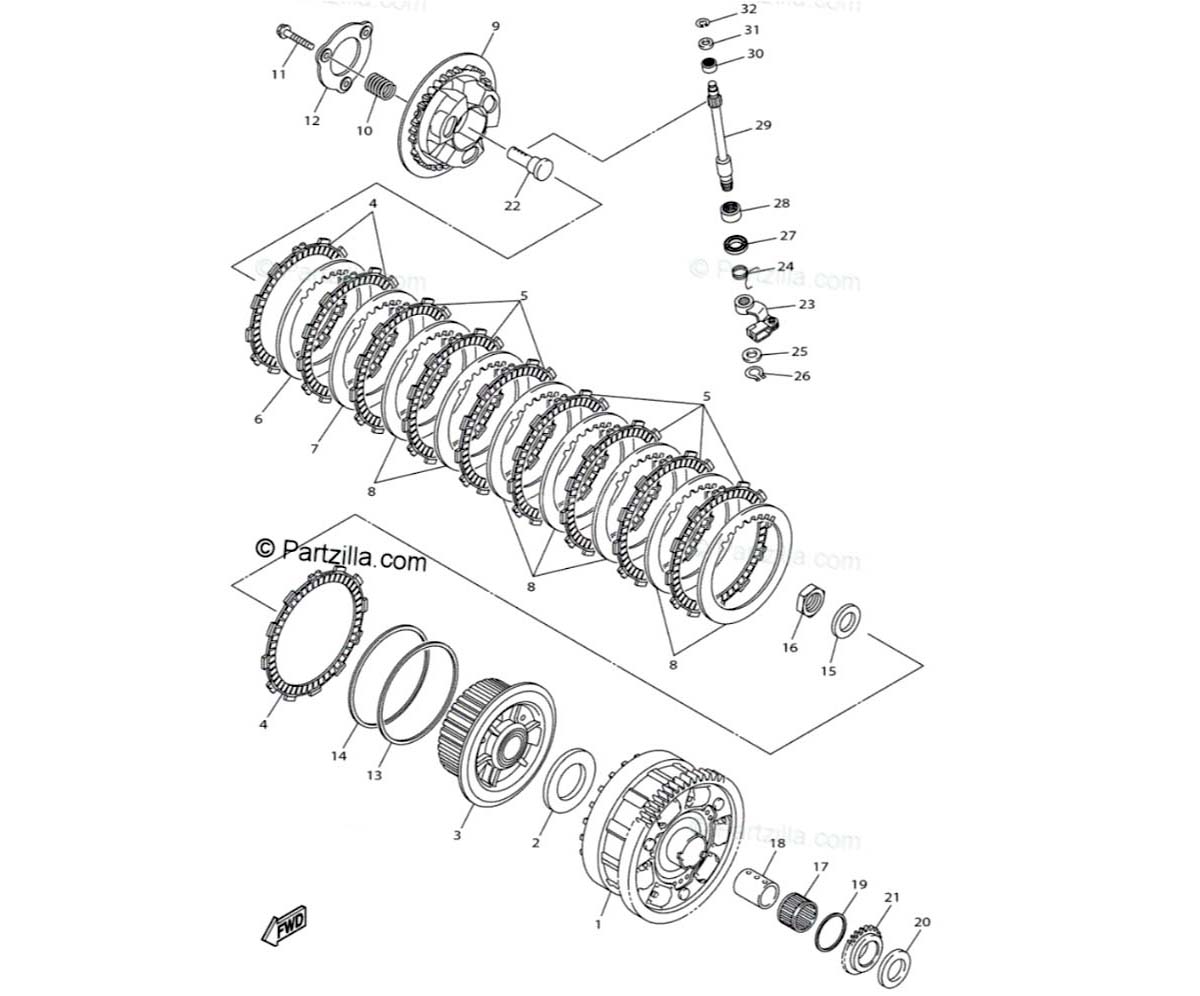
The multi-plate clutch operates as follows:
The crankshaft from the engine is connected to a drive gear that's part of the outer clutch basket. As the crankshaft spins, it rotates the clutch basket. Within the outer basket is a smaller inner basket called the clutch boss, which is connected to the transmission. Between the inner and outer baskets are a set of friction clutch plates that connect to the outer basket, and a set of drive clutch plates that connect to the inner clutch basket.
NOTE: The clutch plates are sometimes called clutch discs.
The clutch plates are covered by a top plate called the pressure plate, and a set of springs. The pressure plate presses down onto the clutch plates so that the friction plates bind against the drive plates and lock together.
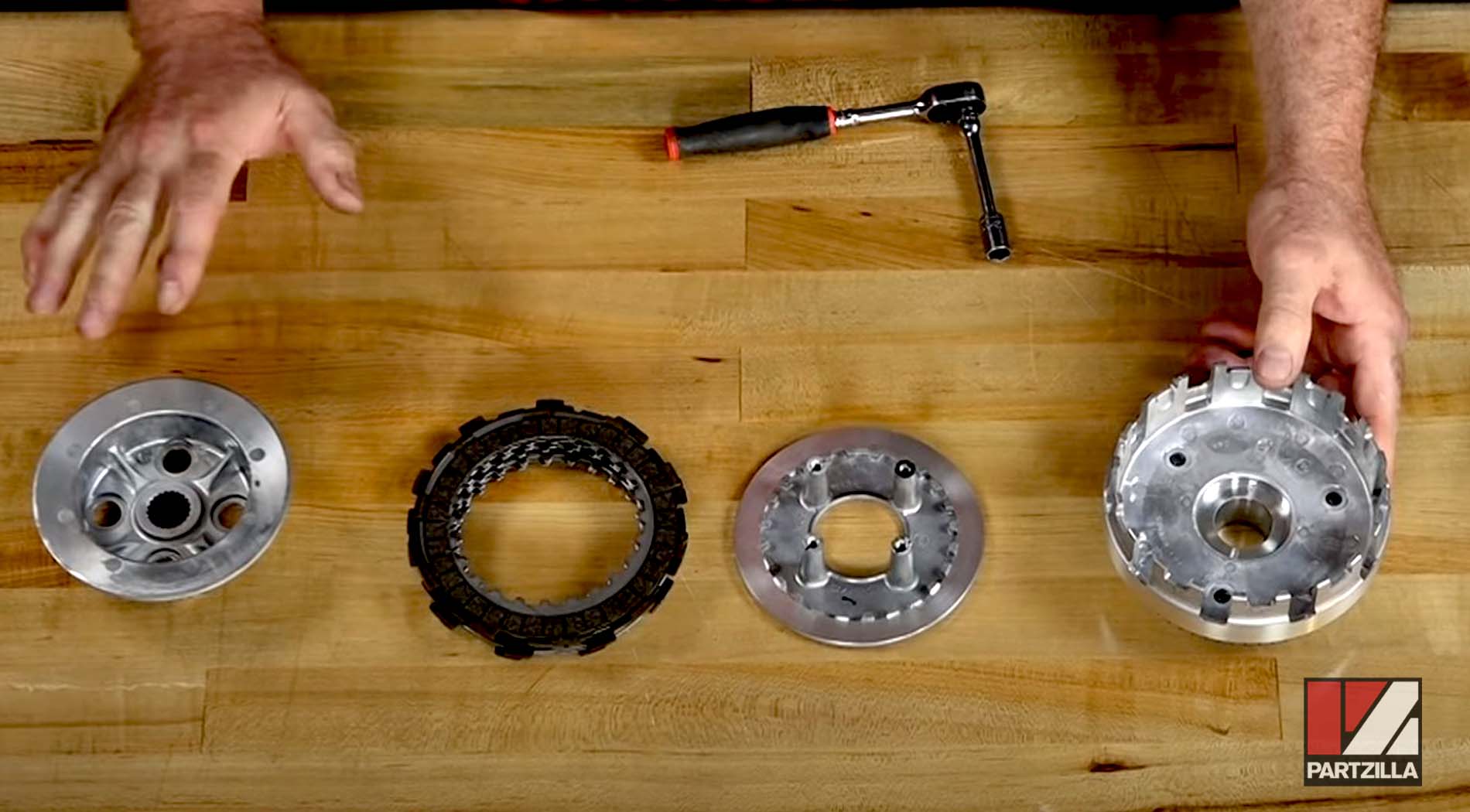
As the crankshaft rotates the outer basket, the locked clutch plates cause the inner basket to rotate as well, which in turn rotates the transmission input shaft, which in turn drives the gearbox, chain and rear wheel(s).
When the clutch lever is engaged, it pushes the springs, which lift the pressure plate and allow the clutch friction and drive plates to spin freely from one another. This allows the outer basket to continue rotating while the inner basket stops rotating. By allowing the inner basket to stop rotating, the power from the engine is prevented from going to the transmission and driving the rear wheel(s).
Centrifugal Clutches
The centrifugal clutch uses the centrifugal forces generated as it rotates to either engage or disengage the clutch mechanism. The exact design and layout of centrifugal clutches varies, but most operate as follows:
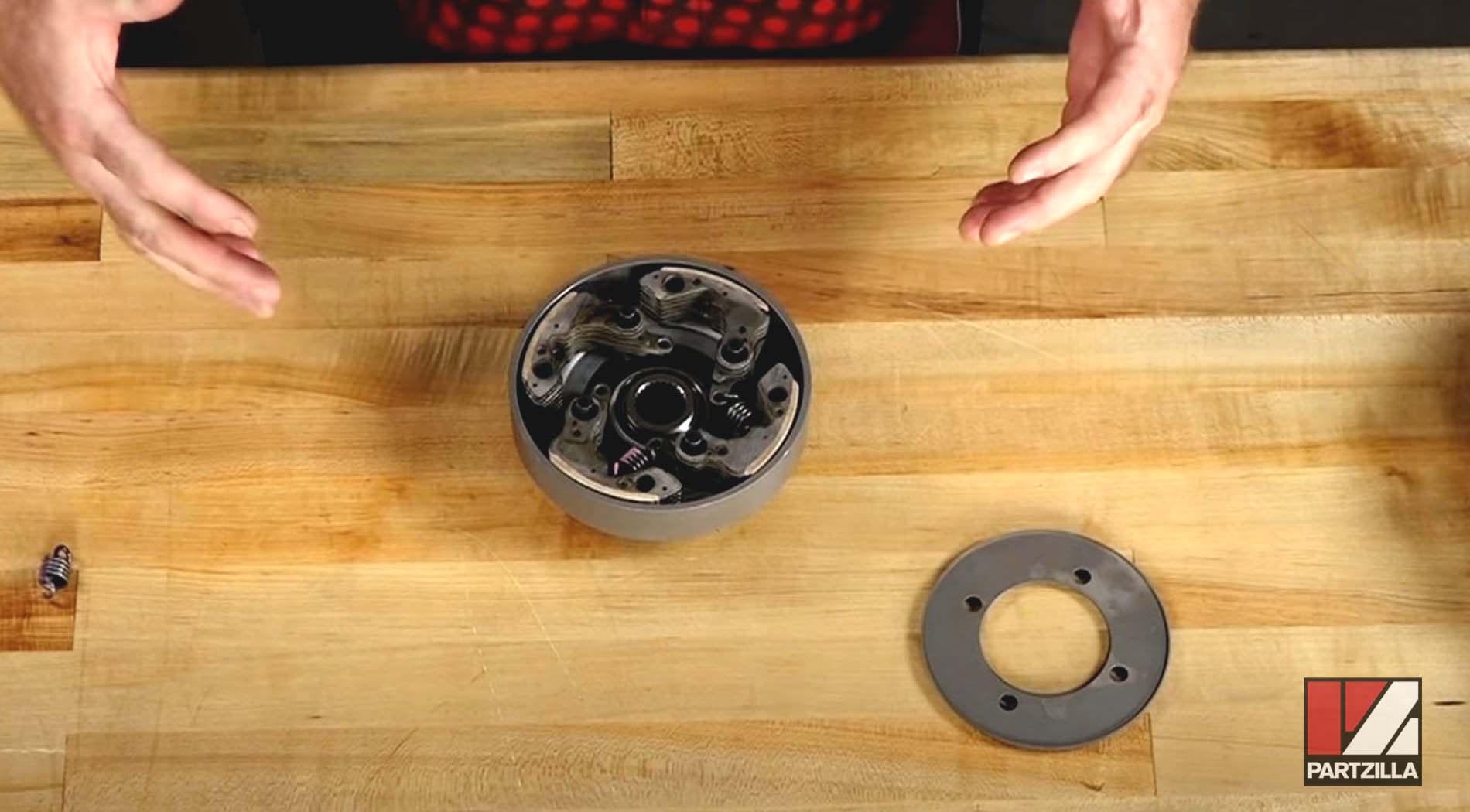
The crankshaft from the engine is connected to a central drive shaft within the centrifugal clutch. As the crankshaft spins, it rotates the clutch drive shaft. The complete centrifugal clutch assembly is housed in an outer clutch drum, which is connected to the transmission.
Between the central drive shaft and outer clutch drum is a spring or set of springs that is/are attached to the drive shaft. At the other end of the spring(s) is/are a set of weighted clutch shoes. The tension of the spring(s) prevents the clutch shoes from coming into contact with the inner face of the clutch drum.

When the crankshaft rotates the drive shaft, the drive shaft rotates the spring(s) and the clutch shoes. As the rotational speed increases, the centrifugal force of the weighted clutch shoes increases, pushing them outward despite the tension of the spring(s) until they contact with and bind against the inner face of the clutch drum.
Once the clutch shoes engage with the clutch drum, they cause it to rotate as well, which provides drive from the engine to the transmission, which in turn provides drive to the rear wheel(s).
Sheave Clutches
Sheave clutches are used with continuously variable transmissions (CVT), and are designed to enable the engine to run at the RPMs that generate the most power at any given speed.
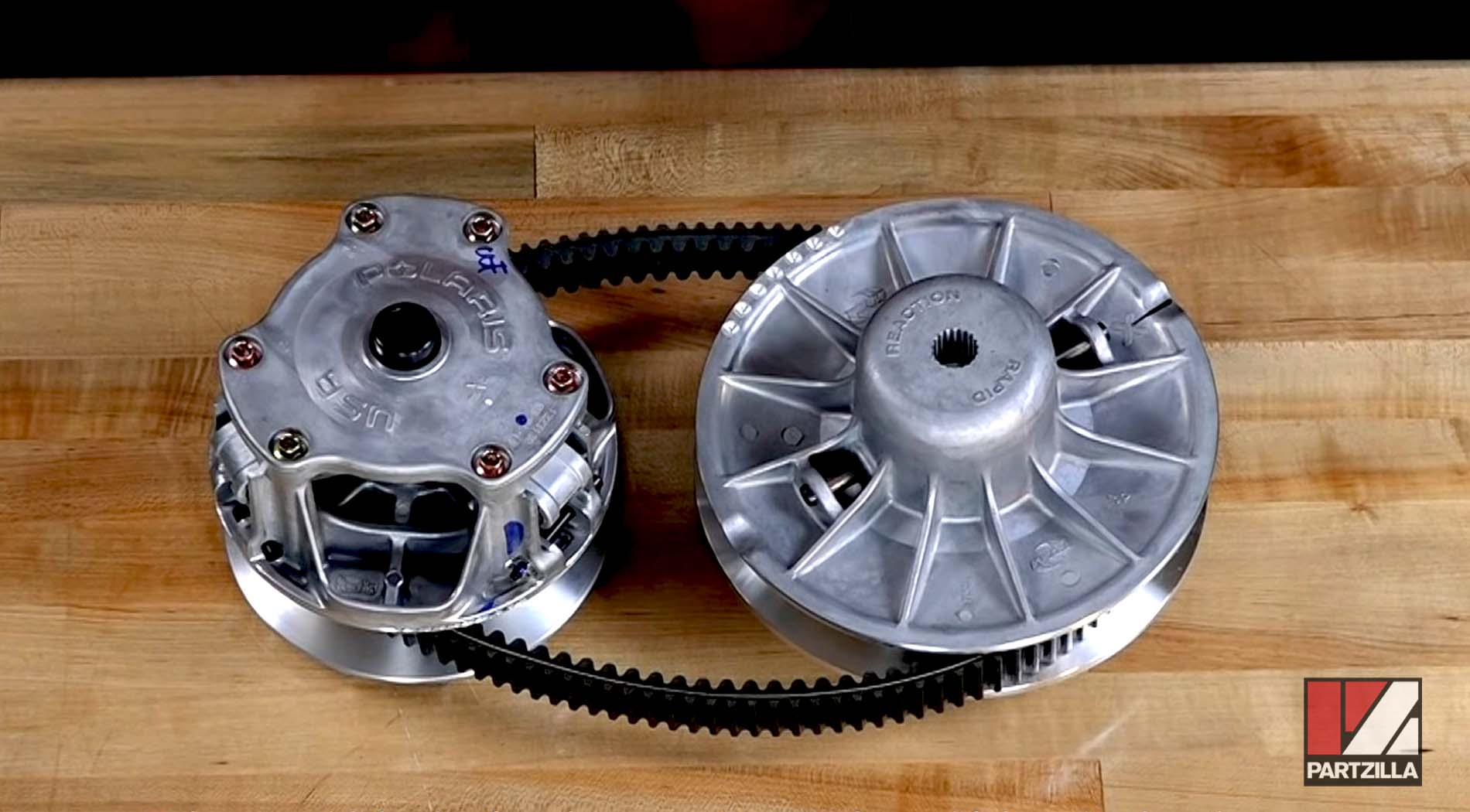
The sheave clutch system is made up of a primary or drive clutch and a secondary or driven clutch, and the system operates as follows:
The crankshaft from the engine is connected to a primary clutch; the primary clutch is connected via a drive belt to a secondary clutch; and the secondary clutch is connected to the transmission.
NOTE: The primary clutch is sometimes called the drive clutch, and the secondary clutch is sometimes called the driven clutch.
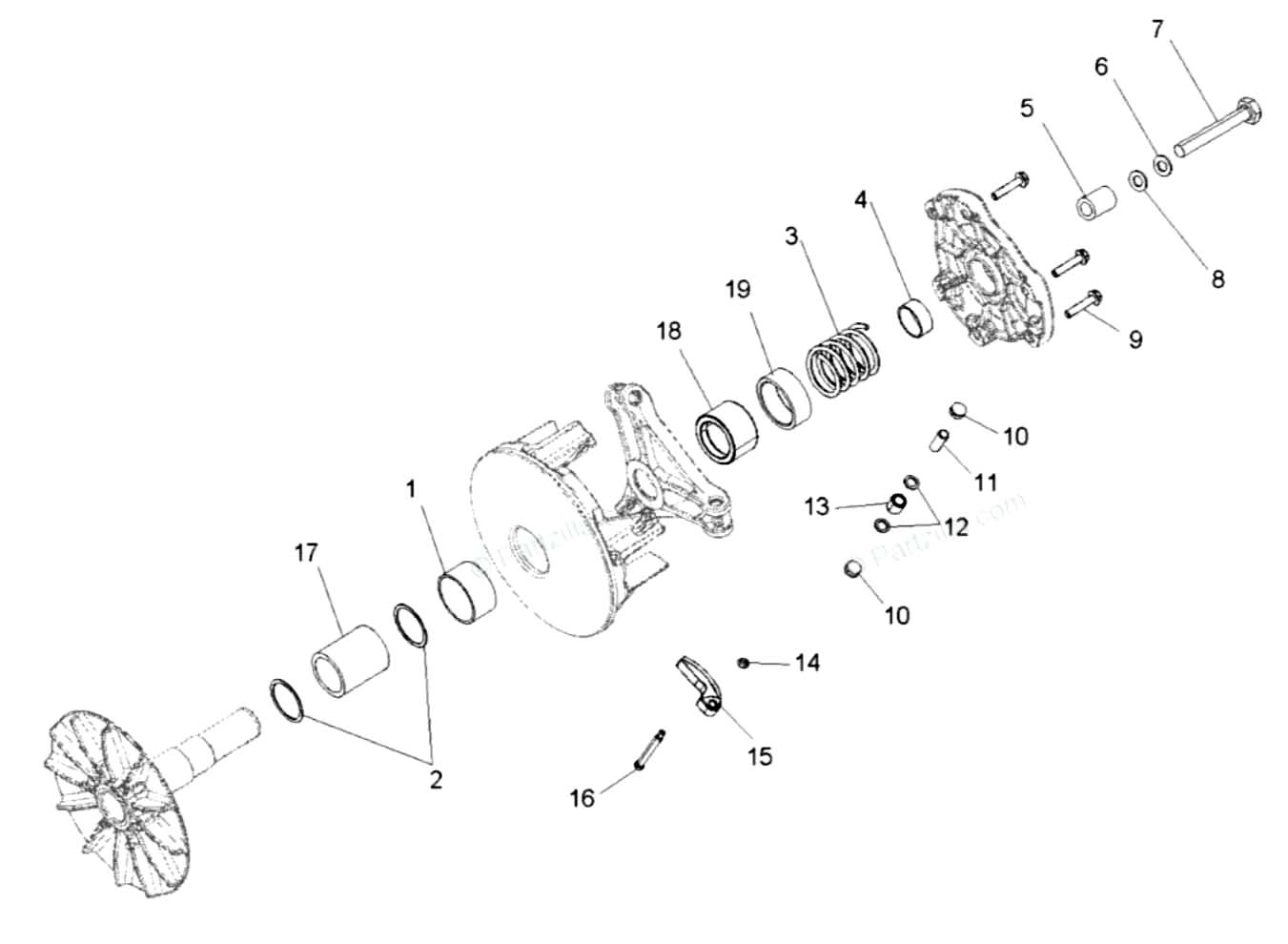
The primary clutch has a stationary sheave and a movable sheave that house the drive belt. The movable sheave has a compression spring and set of fly weights that determine how far apart the movable and stationary sheaves are in relation to one another.

The secondary clutch also has a stationary sheave and a moveable sheave that house the drive belt. The moveable sheave has a compression spring and a helix that determine how far apart the moveable and stationary sheaves are in relation to one another.
As the driveshaft rotates the primary clutch, the centrifugal forces generated by the fly weights cause the moveable sheave to push inward toward the stationary sheave, thus narrowing the gap between the two sheaves. The higher the RPMs from the engine/driveshaft, the narrower the gap between the sheaves.

When the gap between the sheaves narrows, it pinches the drive belt and forces it outward toward the outer edge of the sheaves, thus altering the gearing and allowing for greater speed. As the drive belt rotates the secondary clutch, the centrifugal forces generated on the helix cause the moveable sheave to push outward away from the stationary sheave, thus increasing the gap between the two sheaves. The higher the RPMs from the drive belt, the larger the gap between the sheaves.
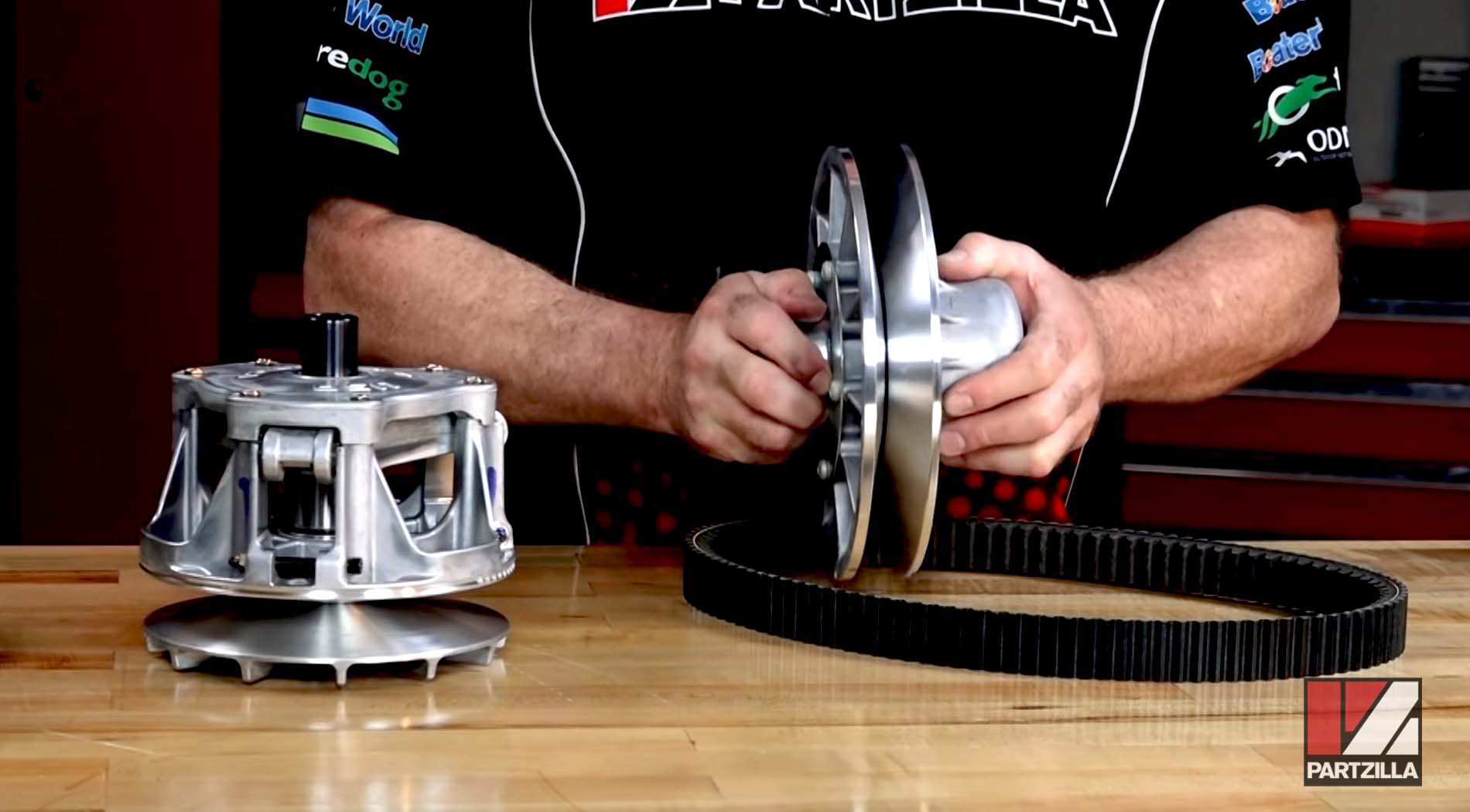
As the gap between the sheaves widens, it allows the drive belt to move toward the center of the sheaves, thus altering the gearing in the same way as shifting from a large sprocket to a smaller sprocket on the rear sprocket set of a bicycle alters the gearing and allows for greater speed.

Now that you know about the different types of clutches and how they work, watch the video below to see a clutch removal and installation in action.
